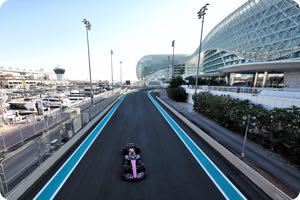DECEMBER 29, 2024
Isola confident 2025 tyres will hit the target
Pirelli’s intensive in-season testing seems to have brought the results the Italian tyre manufacturer was hoping for. Having been surprised by the amount of downforce generated by the 2024-spec cars – and, therefore, by the lap times achieved – already in the first race of the season, Pirelli decided much stronger constructions were going to be needed for 2025, the final year Formula 1 will race with the current set of technical regulations.
Director of Racing Mario Isola admitted that, “the simulations the teams had handed us for what level of downforce they expected to have by the final race of the season weren’t accurate, because, in most cases, by the time we got to the first race, the teams were already reaching the level they were supposed to get to by Abu Dhabi!”
With very little adjusting done to the tyre compounds, “except to make sure that the lap time gap between the C2 and the C3 tyres was in line with the gaps between the rest of the range”, Isola explained that the work done during 2024 was purely aimed at strenghtening the carcass of the tyres, as there was no intention to reduce overheating and bring back the monotonous one-stop races of years gone by.
That’s why Isola admitted that, “it’s difficult to quantify how much you can reduce the overheating. And also it's important that we don't reduce the degradation too much.Unfortunately, thermal degradation and overheating are quite connected, so if we reduce too much degradation, it means that we will have majority of the races on one stop.”
Having worked to make sure the tyres are more consistent through a stint, Pirelli’s intention was, according to Isola, “to try and decouple these two effects in order to reduce overheating that is the reversible effect of the degradation, and keep the thermal degradation.” The Italian was confident that, “the results of the Abu Dhabi test showed we’re on the right path”, but warned that, “the test in Bahrain, next February, will give us another indication, because Bahrain is very severe for traction and degradation, and we will test the hardest compounds there. But to have a clear picture, it's important that we wait for the first three, four races, at least.”
One thing that Isola was openly pleased with was that, during the one-day test in Abu Dhabi, teams and drivers didn’t have any issue getting even the harder compounds available up to the operating window for the first timed lap. The Italian left the test convinced that tyre warm up was, “the same as this year’s.
I don't see any difference.” He then explained that, “we were trying to move the working range a little bit higher, because during the season, also in cold condition we never struggled with the warm up. Sometimes what is a tricky is to balance the front and the rear tyres warm up, so you want to protect the rears, to have a good traction, and you need to put some energy on the front. The tricky job for the engineers is to balance the two axles, but this is circuit dependent, especially with the circuit layout, of how much energy you put into the tyre on that specific circuit. It's not a general behavior of the tyre but the in the 2025-spec tyres, the working range is a little bit higher. And that’s what we tried to do.”
